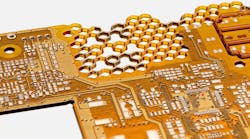THURSDAY WEBINAR, 26 June 2012. Warfighters have been waiting for the opportunity to leverage commercial cell technology on the battlefield and deployed military personnel might soon have their wish granted, if technology firms such as Radisys and Intel have anything to say about it.
Radisys and Intel are working in tandem with military and civil organizations to bring commercial off-the-shelf (COTS) wireless mobile networks to the battlefield. The technology also has applications in public safety, for use by first responders, and in homeland security, enabling critical communications in the event of a natural or man-made disaster. The compact, robust, and portable solutions can also be employed in unmanned vehicle payloads, such those onboard unmanned aerial vehicles (UAVs).
Join Military & Aerospace Electronics Executive Editor Courtney E. Howard and knowledgeable executives at Radisys and Intel for a free Webinar to learn more.
· Date: 28 June 2012
· Time: 2 p.m. Eastern Daylight Time (EDT) / 1 p.m. Central Daylight Time (CDT) /
11 a.m. Pacific Daylight Time (PDT) / 6 p.m. Greenwich Mean Time (GMT)
· Register:http://www.militaryaerospace.com/webcasts/2012/06/ultra-portable-cellular-networks.html
· Cost: Free
“Commercial wireless mobile network technology that we’re using in our daily lives, including the 3G HSPA and LTE technology, is now being applied toward battlefield communications,” affirms Todd Mersch, product line management director at Radisys. Mersch, operating out of the company’s San Diego offices, is responsible for the company’s Trillium wireless protocol and application layer software, as well as the professional services and customization work offered in conjunction with those solutions.
“Soldiers want this technology in the field because the systems that we use today don’t perform as well as what can be found in the commercial world,” Mersch explains. “A lot of what is actually being used in the field, albeit on a smaller scale, has been 3G technology, but there’s a strong pull to move to LTE in the future.”
“Our role as a business unit is to bring the wireless software capability to military and aerospace applications,” said Mersch. “As long as we can work closely to ensure the ecosystem is secure, it presents both a cost and a performance benefit.”
This allows companies with telecom expertise and a history of delivering technology into aerospace and defense with a great opportunity to provide reliable and efficient solutions—as Radisys executives learned.
Companies involved in building and delivering communications and networking equipment to the U.S. Department of Defense (DOD) engaged Radisys in the project given their work in 3G/LTE software and small cell technology. “What they are trying to do is to converge the whole network in a very, very small form factor,” Mersch describes. These companies are fitting fully functional, optimized hardware and software capabilities into a system roughly the size of a postcard, capable of fitting easily into a soldier’s pack, on an unmanned vehicle, or in a combat ground vehicle, for example.
During the June 28 Webinar, Radisys and Intel executives involved in devising, testing, and delivering commercial off-the-shelf (COTS) wireless mobile network technologies to the battlefield will discuss and answer questions on:
– Why the DOD and military find wireless mobile network technology useful
– The drivers behind the trend and technologies
– The challenges associated with fielding COTS vs. custom technology in mil-aero environments
– How to pull this type of technology together, including software and hardware elements
– Engineering work that needs to be done to accomplish deployment
– Scaling up to higher capacities
– Bringing together the software deployed in commercial networks and hardware that scales from small ruggedized communications or COMM-E modules
– Relevant form factors, ranging from the size of a postcard all the way up to a large, high-end infrastructure
– Manned and unmanned vehicle-mounted applications
– Taking advantage of the latest processing technologies, including 3rd Generation Intel Core i7 processors
– System security, including systems booting securely, via Intel
– Adding remote system management capability
– Handling hardware failures and challenges remotely
– Virtualization technology for running the core network on different cores
– Shrinking multiple elements into a single, postcard-sized device
– Video conferencing and push-to-talk capabilities enabled by the Radisys software media server
“This technology is game changer, and the U.S. Army is leading the charge to bring it to the battlefield” Mersch acknowledges.
Register now for “Ultra-portable Cellular Networks for Next Generation Warfare,” a free Webinar hosted by Radisys and Intel: http://video.webcasts.com/events/pmny001/viewer/index.jsp?eventid=43000



